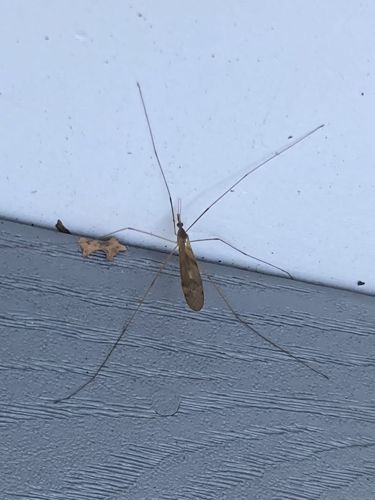Crane Fly
Scientific Name: Tipulidae (Family)
Order & Family: Diptera (Order), Tipulidae (Family)
Size: Body length typically 0.4 to 1.6 inches (10-40 mm); leg span can be much larger.

Natural Habitat
Damp environments, often near water sources, forests, meadows, and gardens. Larvae are typically found in moist soil, decaying wood, or aquatic environments.
Diet & Feeding
Adult crane flies generally feed on nectar, decaying organic matter, or sometimes don't feed at all (if their lifespan is very short). Larvae (leatherjackets) are more varied, feeding on decaying plant material, roots of grasses and other plants, or sometimes small invertebrates.
Behavior Patterns
Adults are often seen flying clumsily, especially at dusk. They are attracted to lights. Their long, fragile legs are easily detached, which can be a defense mechanism. Larvae spend most of their time underground or underwater, going through several instars before pupating.
Risks & Benefits
Crane flies pose no direct risk to humans; they do not bite or sting. They are often mistaken for giant mosquitoes but do not transmit diseases. Some larvae (leatherjackets) can be agricultural pests, damaging lawns and crops by feeding on roots. As benefits, they serve as a food source for birds, bats, and other insects, and their larvae contribute to decomposition in ecosystems.
Identified on: 9/19/2025